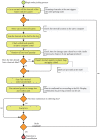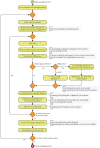LARa: Creating a Dataset for Human Activity Recognition in Logistics Using Semantic Attributes
- PMID: 32707928
- PMCID: PMC7436169
- DOI: 10.3390/s20154083
LARa: Creating a Dataset for Human Activity Recognition in Logistics Using Semantic Attributes
Abstract
Optimizations in logistics require recognition and analysis of human activities. The potential of sensor-based human activity recognition (HAR) in logistics is not yet well explored. Despite a significant increase in HAR datasets in the past twenty years, no available dataset depicts activities in logistics. This contribution presents the first freely accessible logistics-dataset. In the 'Innovationlab Hybrid Services in Logistics' at TU Dortmund University, two picking and one packing scenarios were recreated. Fourteen subjects were recorded individually when performing warehousing activities using Optical marker-based Motion Capture (OMoCap), inertial measurement units (IMUs), and an RGB camera. A total of 758 min of recordings were labeled by 12 annotators in 474 person-h. All the given data have been labeled and categorized into 8 activity classes and 19 binary coarse-semantic descriptions, also called attributes. The dataset is deployed for solving HAR using deep networks.
Keywords: attribute-based representation; dataset; human activity recognition; inertial measurement unit; logistics; motion capturing.
Conflict of interest statement
The authors declare no conflict of interest.
Figures















References
-
- Bulling A., Blanke U., Schiele B. A Tutorial on Human Activity Recognition Using Body-Worn Inertial Sensors. ACM Comput. Surv. (CSUR) 2014;46:1–33. doi: 10.1145/2499621. - DOI
-
- Grzeszick R., Lenk J.M., Rueda F.M., Fink G.A., Feldhorst S., ten Hompel M. Deep Neural Network based Human Activity Recognition for the Order Picking Process; Proceedings of the 4th International Workshop on Sensor-Based Activity Recognition and Interaction; Rostock, Germany. 21–22 September 2017.
-
- Roggen D., Calatroni A., Nguyen-Dinh L.V., Chavarriaga R., Sagha H., Digumarti S.T. Activity Recognition Challenge|Opportunity. [(accessed on 20 March 2020)]; Available online: http://www.opportunity-project.eu/challenge.html.
-
- Reiss A. UCI Machine Learning Repository: PAMAP2 Physical Activity Monitoring Data Set. [(accessed on 20 March 2020)];2016 Available online: http://archive.ics.uci.edu/ml/datasets/PAMAP2+Physical+Activity+Monitoring.
MeSH terms
Grants and funding
LinkOut - more resources
Full Text Sources
Miscellaneous

